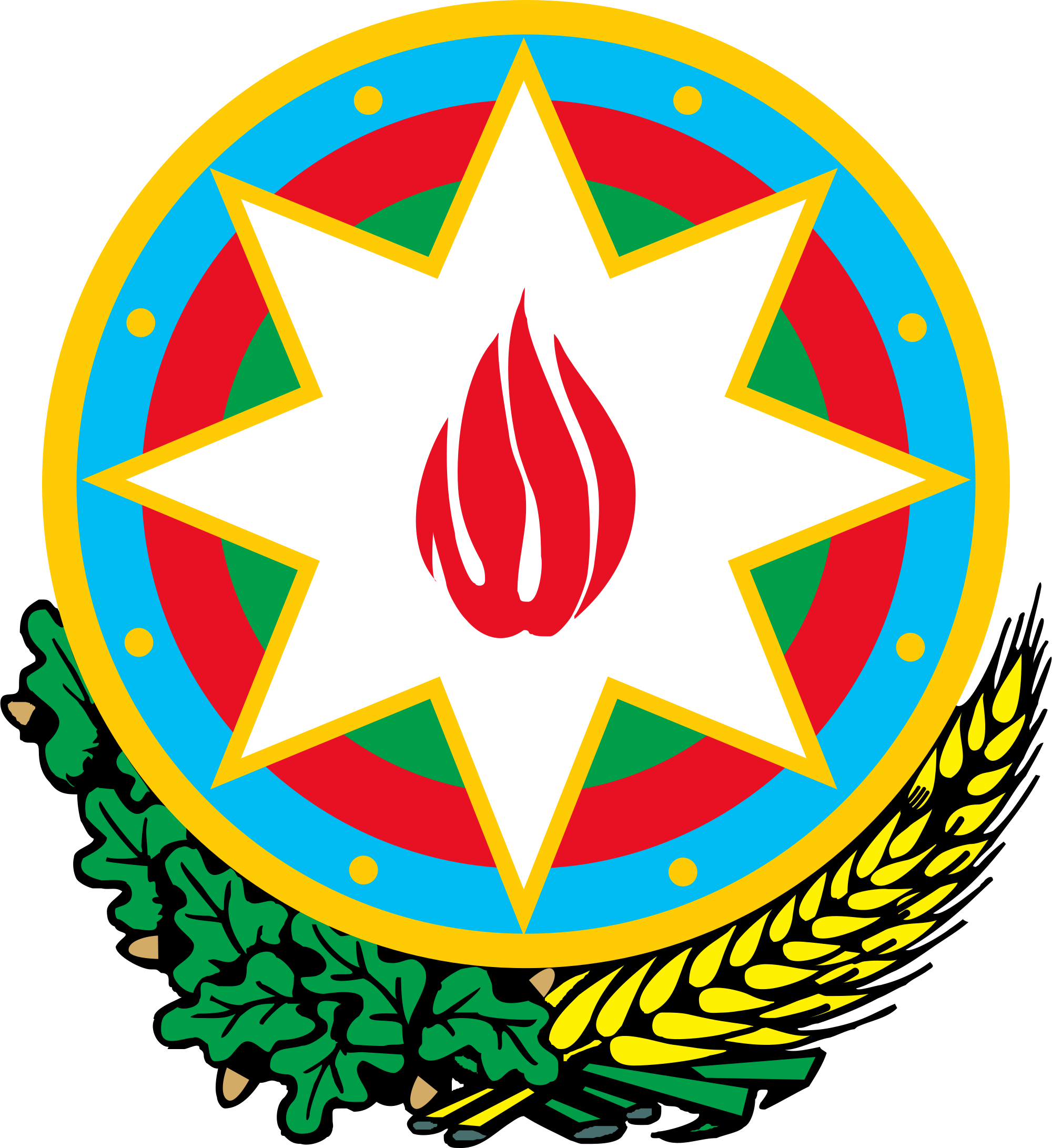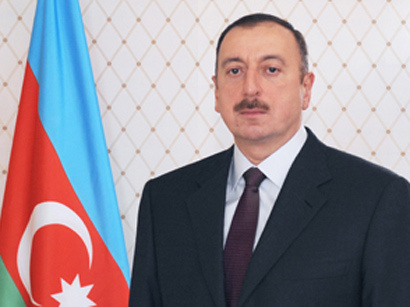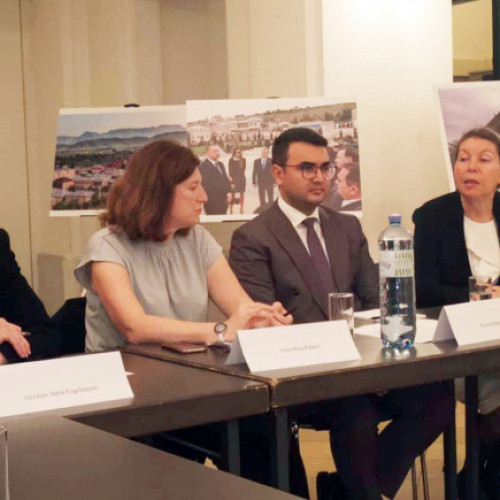AZERBAIJANI TURKS

The Azerbaijani Turks, whose general number is about 50 million people on the world, are the ancient indigenous people of the northern and western provinces of the Islamic Republic of Iran, the Russian Republic of Dagestan, the East Anatolian region of Turkey, and Georgia along with the Republic of Azerbaijan. According to the Turkmanchai Treaty signed in 1828, following the division of the Azerbaijani territory between two empires, the northern part of the country was annexed to Russia and the southern areas to Iran. Thus, like the Azerbaijani land, the Azerbaijani Turks were divided into two parts. After the Turkmanchai Treaty was signed, the Russian Empire pursued a policy of forcibly relocating indigenous people from the territory of their forefathers; consequently, part of them were exiled forcibly from their historical lands - the territories of Western Azerbaijan (the present territory of the Republic of Armenia). On that area, where the Armenians from Turkey and Iran had been massively deported - on the western territories of Northern Azerbaijan, "an Armenian province" was formed in 1828 which was followed by the establishment of the first Armenian statein history - "The Republic of Armenia" in 1918. The Azerbaijani Turks, who constituted the dominant ethnic majority in the former historical areas of Azerbaijan, in the areas presently called "The Republic of Armenia", were massacred and executed in stages, were deported as a result of the ethnic cleansing policy pursued in 1905, 1918-1920, 1948- 1956, 1987-1988.
The formation process of the Azerbaijani Turks took place in the historical Azerbaijani territory stretching out from the Greater Caucasus in the north to the area of Sultaniyya-Zanjan-Hamadan to the south, covering the Alaghoz Mountains including Eastern Anatolia and the basin of Lake Goycha to the west and the Caspian to the east. The people formed in the territory, where various civilizations, cultures and religions merge, is the heir to a rich historical memory and particular cultural legacy. As mentioned by the Early Medieval Arab authors, Azerbaijan is the home of the Turks since antiquity. in the works of such Arab and Percian historians as Ubeyd Ibn Sharuya, At-Tabari, Balamini one can find numerous interesting facts on Azerbaijan and its Turkish population.

The ethnic history of the Azerbaijani Turks is characterized by the Turkic tribes' frequent mass migration here and their merging with the indigenous Turkic ethnicities in Azerbaijan's territory since the earliest milleniums. Since the ancient periods various tribes have mixed with the indigenous compatriots having flown to these rich areas, and taken a special part in the formation of a single ethnicity. The earliest greatest inflow of the Turkic tribes settled in Azerbaijan started with the arrival of Kimmer-Scythians-Saks. After the Scythian-Sak tribes, since the first centuries of our era the Huns, Bulgars, Sabirs and Khazars became a second great wave of Turkic tribes settling in Azerbaijan. in the formation of the ethnic history of the Azerbaijani Turks the Oghuz Turks have had an especially decisive role.
The Azerbaijani Turks have maintained in their historical territory their traditions of statehood along with their rich culture since the ancient periods. The earliest state institutions and ethnic-political unions in the territory of Azerbaijan had been formed between the end of the 4th millenium and the early 3rd millenium B.C. Here from the 4th century B.C. to the 8th century A.D. the ancient Azerbaijani state - Caucasian Albania had an exceptional place in Azerbaijan's ethnic-political picture, in the formation process of a poli-culturascene in the territory of the country, as a whole in the Early Medieval history of the Caucasian region. it should be noted that the population of Caucasian Albania consisted of tribes speaking Turkic, Percian and Caucasian languages. The states governed by the Azerbaijani-Turkic dynasties such as the Sajis, Shirvanshahs, Salarids, Garagoyunlu, Aghgoyunlu, Safavids who continued the national statehood traditions in the Middle Ages played an important part in the formation of a single language and common culture here.
The Modern Azerbaijani language has been formed in this long historical development process as a result of the mutual integration of the Turkic tribes who were the bearers of the common ethnic culture in the territory of the present Azerbaijan since the beginning of the 1st millenium B.C. Azerbaijani belongs to the Oghuz group of the Turkic language family. This language constitutes the south-western areal of the Turkic languages together with the Turkish, Turkman, Gagauz languages. At present about 91.6% of the population of the Republic of Azerbaijan consists of the Azerbaijani Turks. As the Azerbaijani Turks are the titular ethnicity in the entire territory of Azerbaijan their language is the means of communication among other nations. The state language of the Republic of Azerbaijan is the Azerbaijani language. The Azerbaijani language, has historically been the common means of interaction in the Caucasus, Middle East. The religion of the Azerbaijani Turks is Islam.

The Azerbaijani Turks enjoy an ancient and rich culture, customs and traditions. These values are being promoted with care today as well. Actually, a common Turkic culture and the legacy of Islamic civilization constitute the basics of the Azerbaijani Turks' culture and the elements pertinent to the nations of the region and other religions are also reflected here.
The Azerbaijani people is distinguished by its tolerance. This feature is manifested in its national statehood traditions, lifestyle, worldoutlook, culture, and art. Stamped in the memory of the Azerbaijani Turks, the system of ancient and diverse beliefs have taken deep roots in their moral world and preserved its elements within Islam. The ancient and medieval chroniclers had underlined the peaceful co-existence of the peoples worshipping diverse faiths in this area. According to historical sources, back in the 1st century A.D. the first Christian missionaries disseminated Jesus Christ's teachings here. The archeological excavations carried out in the area of the Shabran region in the late 20th century discovered a Jewish quarter and the remnants of a synagogue built there in the 7th century A.D. Even after the Azerbaijani people adopted Islam, the traditions of tolerance have been maintained and developed here. A rich and unique Azerbaijani cultural heritage has been shaped here as a result of the integration of different beliefs and cultures.
The period of Azerbaijan's ancient state, Caucasian Albania reflecting the rich antique and early medieval culture is the richest stage of the Azerbaijani population's preIslamic beliefs. The ancient authors write that the Albanian tribes worshipped the Sun, Earth and Sky Tengri, the Moon, and different natural phenomena. The Ancient Azerbaijani population's worshipping of cosmic beliefs and various natural phenomena is also confirmed by archeological and ethnographic studies. The archeological studies in Azerbaijani regions such as Dashkasan, Shamkir, N akhchivan and Shaki have revealed some materials related to astral cults such as crescent and sun-shaped covers for tombs, a ring with the description of a goddess, the Moon, a star, etc. dating back to the 3rd millenium B.C. in the Azerbaijani regions of Guba and Cabala ancient tomb monuments with a description of the Moon and Sun characterizing the Azerbaijanis' pre-Islamic ideology have been discovered.

Tengrism was one the beliefs of the ancient Azerbaijani people. The Albanian author M.Kalankatli records about "the cult of Tengri, the owner of the skies", the rituals held in Tengri Khan's honour in Albania. The tradition of hanging the skin of the animal slaughtered as an offering beneath the sacred trees still survives in the region of Cabala which was the capital of Caucasian Albania. The Azerbaijani Turks, who are the successors of the ancient Albans, did not forget their earliest beliefs even after adopting Christianity and Islam. Stamped in the Azerbaijanis' memory, this system of beliefs has taken deep roots in their spiritual world.

The Novruz holiday holds a special place in the system of rich cultural values of the Azerbaijani Turks. it is not a coincidence that in Nizami Ganjavi's work "Isgandarnameh" the ruler N ushaba hosted Isgandar on the N ovruz holiday. The Azerbaijani people's national leader Heydar Aliyev considered the N ovruz Holiday, one of our most ancient and key festivities, as a tradition historically unifying our people, nourishing its existance with the power of unity.

Novruz is associated with natural phenomena, the four elements constituting the core of creation and life - earth, air, water and fire. İn these festivities rich in expressions of attributive nature, ritual songs, a fire is made, the first furrow is made on the soil, divination with water is performed, etc. By making a fire and jumping over it on holiday evenings the rituals of purifying the internal realm of a human being from sorrows, resentment, malice, etc. are carried out. On N ovruz evenings the tables are decorated with sarnani (rye-grass), shakarbura, bakhlava, sarnani halvasi (malted wheat halva), sheker choreyi (sweet bread) and other sweets, nuts, dyed eggs, the royal national and holiday asset - pilaf - is cooked, a candle is burnt in homes in honour of each family member. On these holidays charity activities are carried out, such as visiting the people deprived of their relatives' care, vulnerable people, the old, giving them a helping hand, delighting them with holiday presents. On the day of Novruz the tables are laid with various sweets and dishes, fruits such as sarnani representing Nature - the arrival of Spring, the sun-shaped goghal, shakarbura representing the crescent and bakhlava symbolizing the Earth. The people, who wishes an abundant, prosperous year, would lay on the table some water, a mirror, even gold jewellery items. According to customs and traditions, on holiday everyone should be in their homes, those, who do not speak to each other, reconcile, and people are supposed to exchange kind words and nice wishes.

The Azerbaijani Turks, who are among the ancient nations of the region have made significant contributions to the world civilization with their material-spiritual legacy - their rich history, culture, art, learned men of scientific, artistic and philosophical thought - Nizami, Fuzuli, Bahmanyar, Abdulgadir Maraghayi, Nasraddin Tusi, Yahya Bakuvi, Khatai, Nadir Shah and others. The rock inscriptions in Gobustan, Gamigaya, Kalbajar, also Davaboynu and Goycha in Western Azerbaijan are world famous. The artistic ceramic and metalware of Caucasian Albania, the works of miniature, carpetweaving, pottery, jewellery of the medieval world-famous Tabriz, Nakhchivan, Ganja, Gazakh, Guba, Baku, Shaki, Shamakhi and Garabagh schools of art are featured in the most respectable museums. in medieval Azerbaijan the miniature arts entered a stage of high development. The indelible traces of this unique art have survived up to present in the interior design of Khan Sarayi, the palace in Shaki, and in the wall descriptions decorating the houses of Shusha, Ganja, Guba.
Carpet-weaving is one of the most ancient and wide-spread types of art of Azerbaijan. The Azerbaijani carpet, which enjoys its own place and peculiarities in world culture, is distinguished by its unique style, colour shades, and ornaments that confirm Azerbaijan's ancient ethnic identity and attest to its cre ativity. According to archeological materials and written sources, carpet- weaving in this area spread during the Bronze Age. Herodotus, Claudius Elian, Xenophon and others chronicled the Azerbaijani carpet-weaving art. The art of silk production developed over the course of history. The high quality silk fabrics woven here were also exported to European countries.

Azerbaijani Turks' traditional cuisine and table manners have earned great fame today beyond the boundaries of Azerbaijan too. in ancient sources, including the epic "The Book of Dede Karkut", tales and stories, and foreign travellers' travel notes, there is precious data about examples of the Azerbaijani people's cuisine, table manners, customs of laying the table, and receiving a guest. A great part of them are being maintained with care in this nation's everyday life today as well. At present in Azerbaijani cuisine, the samples of ethnic cuisine such as khangal, khamirashi, arishta, umaj, gurza, dushbara, gutab, kata, chudu, fimi, siyig, dovgha, kabab are especially popular. Here pilaf is one of the most wide-spread meals. In Azerbaijan, pilaf has over 40 varieties such as govurma pilaf, sabzi-govurma pilaf, chilo pilaf, fisinjan pilaf, doshama pilaf, shirin pilaf, sudlu pilaf and others. At present among the sweet types of ethnic cuisine shakarbura, bakhlava, shakarchorak, Baku gorabiyasi, Azerbaijan nani, Garabagh katasi, Guba tikhmasi, Lankaran kulchasi, Shamakhi mutakkasi, Nakhchivan pakhlavasi and others are wide spread beyond the boundaries of the country too.









